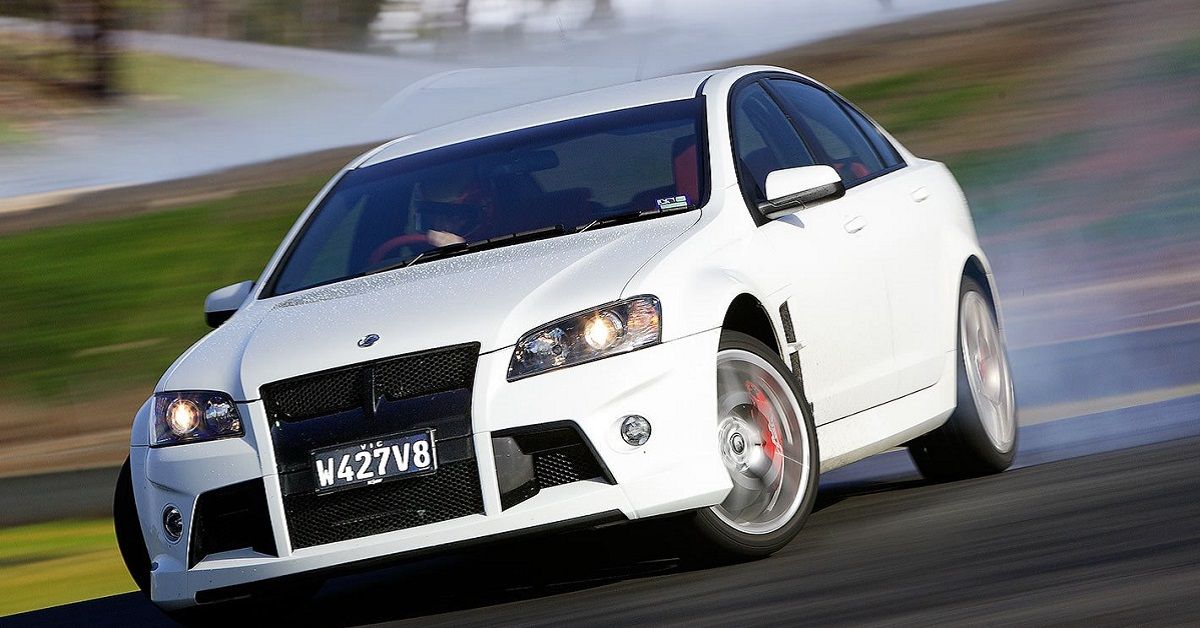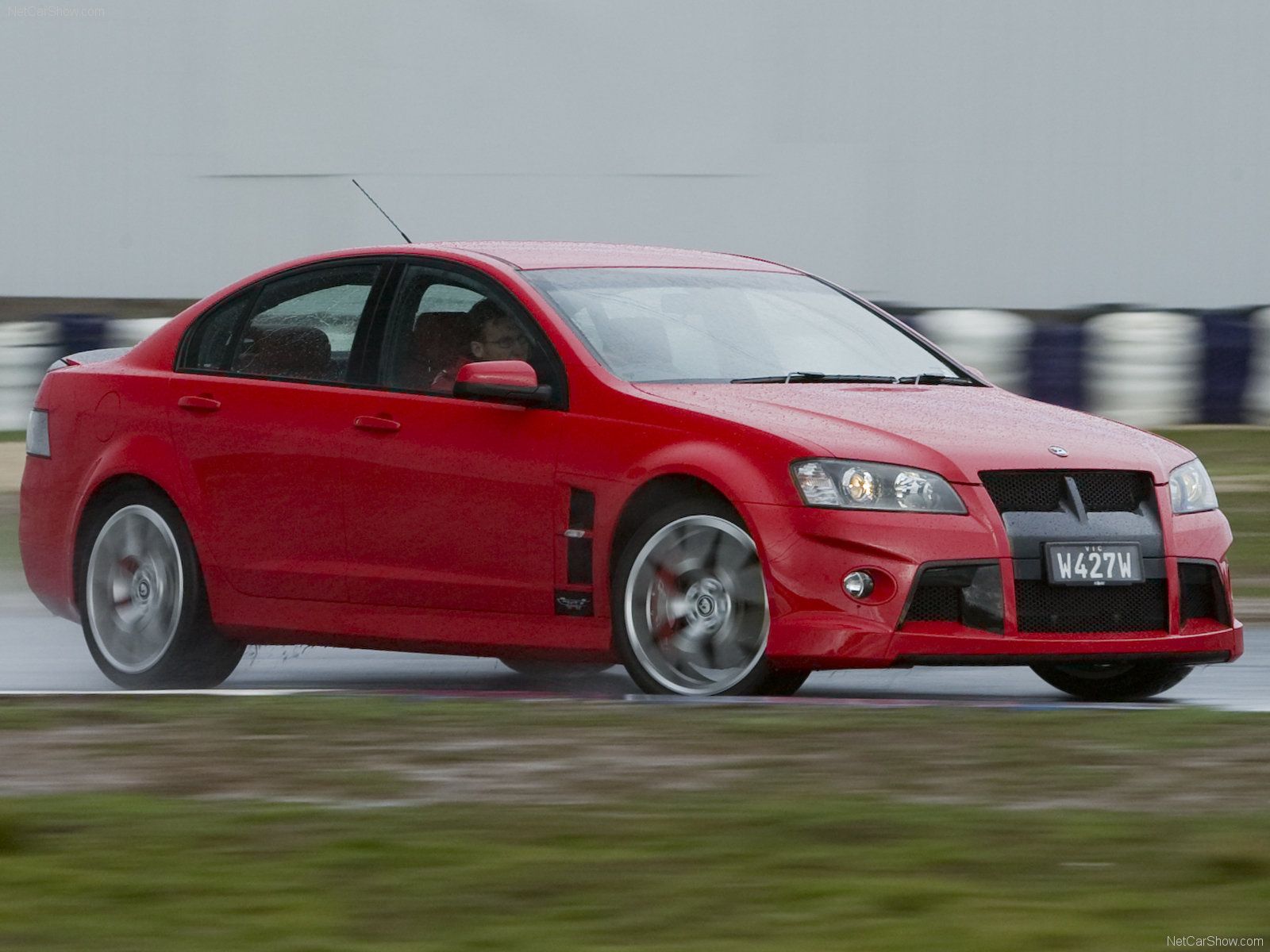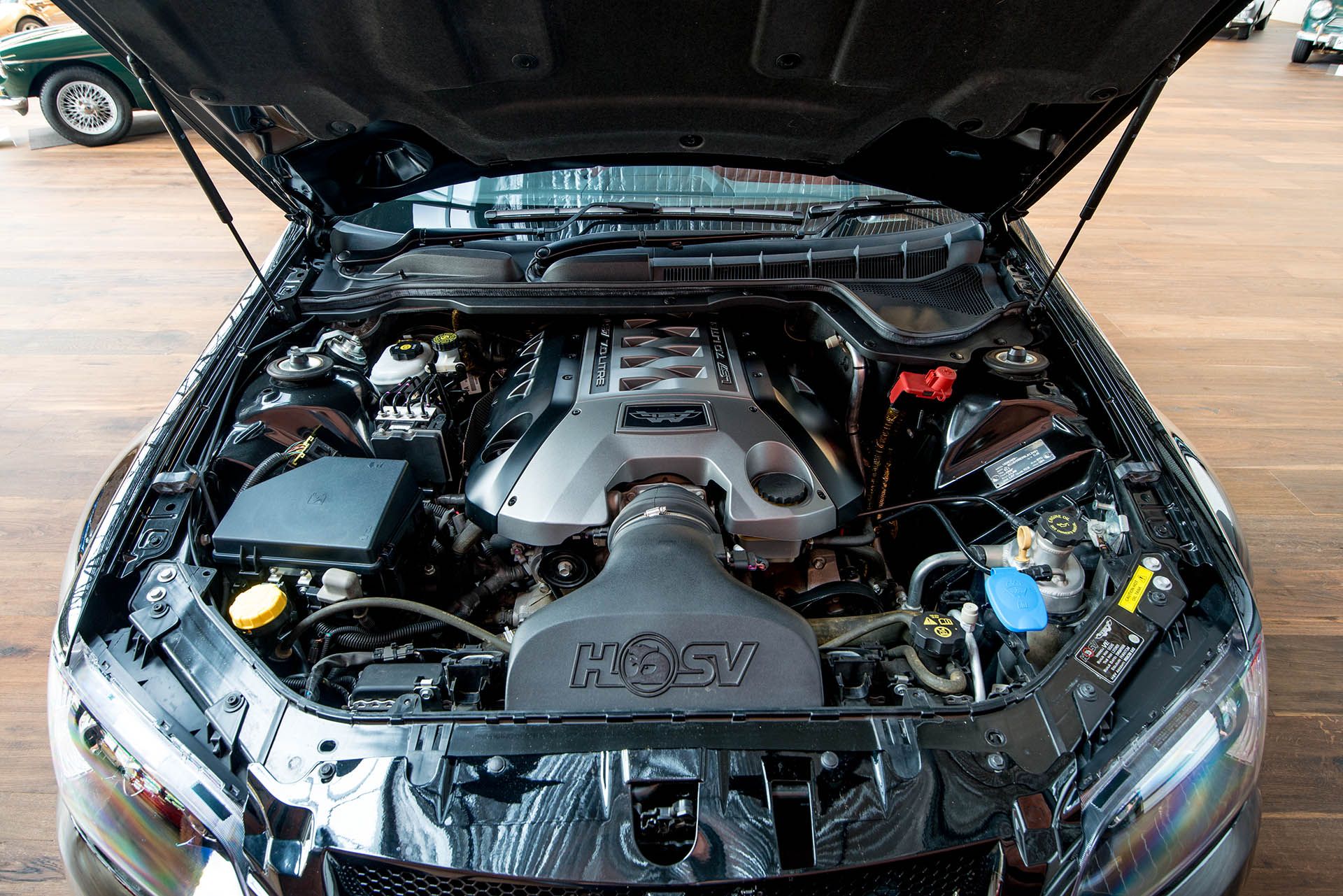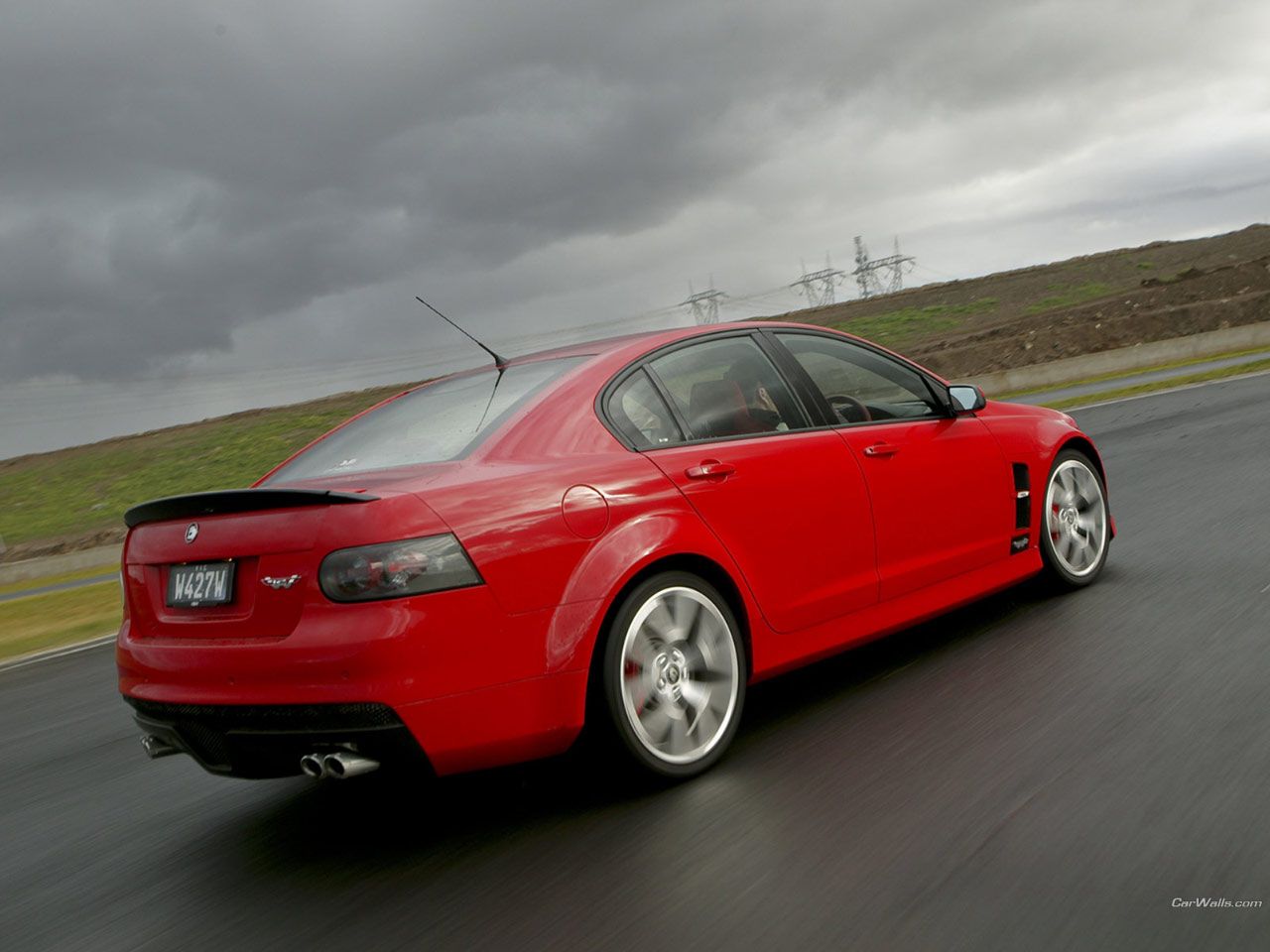For the uninitiated, Holden is General Motors' Australian division. Or rather, it used to be. The company stopped making cars in Australia in 2017, and by 2021 Holden has all but disappeared, which must be a bitter pill to swallow for GM Australia's notoriously loyal fanbase.
However, before Australia would lose one of its staple domestic car brands, Holden left behind quite a few excellent parting gifts, like the Maloo muscle ute and the car at the center of this piece, the Holden Special Vehicles (HSV) W427.
The HSV W427 was an attempt to create the most powerful factory muscle car Australia had ever seen, and with a 7.0l LS7 V8 taken right out of a Corvette C6, it produced a little over 500 horsepower and could do 0-60 comfortably under five seconds.
It was a hilariously fast sedan, with effortless tire-shredding capabilities and an engine note that could rattle windowpanes three counties over. It was a proto-Hellcat, a mad Aussie muscle car that showed Americans they're not the only ones who know how to do big V8s and burnouts. Here's what made the W427 such a special car, and what one of these beasts would cost you today (if you can find one):
VE Commodore: International Muscle Car Of Mystery
If the shape of the car photographed above is familiar to you, you likely know it best as the Pontiac G8. That was the version of the Holden VE-generation Commodore sold in North America, but even an Americanized facelift does little to hide the car's Australian roots.
The VE Commodore sold from 2006 to 2013 in its home market (we got the Pontiac G8 for just two short years before the housing crash of '08). It was the fourth full redesign of the Commodore, and interestingly it was the first Commodore to be designed and built entirely in Australia: no influence from GM Europe or GM North America, other than sharing some engine components with other models.
Australians could get the VE Commodore in sedan, wagon or the two-door traditional Aussie"ute" body styles. All body styles could be had with V6 and V8 engines, manual and automatic transmissions and in all specs, drive goes exclusively to the rear wheels.
There were a number of performance models throughout the VE chassis' production run, including "GTS" and "SS" models, but the peak of the VE has to be the limited-run, seven-liter HSV W427.
Holden Special Vehicles, or HSV, was essentially Holden's AMG or M-Division; an in-house performance shop that could churn out incredibly fast versions of Holden's garden-variety cars, and the W427 was one of their finest efforts.
An Actual Four-Door Corvette?
Most of the engines that graced the VE's engine bay were built in Australia, but the W427's massive LS7 seven-litre V8 (427 cu. in.) was quite literally a Corvette motor shipped Down Under in a crate.
The W427's engine produced 503 horsepower and 472 lb. ft., which was good for 0-60 mph in 4.7 seconds, if you could get the rear end to grip. Despite its massive displacement, the engine could rev out to 7,000 RPM, which gave it a fantastic noise and phenomenal capacity for tire shredding. It decimated its rear wheels through a Tremec T-56 manual transmission and a limited-slip differential.
Elsewhere, the car didn't make too many more departures from lesser sporty Commodores. It had magnetic ride control dampers like most of GM's performance cars and an active exhaust, which helps prevent you getting arrested while driving through built-up areas in a car that sounds like a gunfight.
Buying One Today: Godspeed and Good Luck
If you're North American, you're almost entirely out of luck. These cars aren't yet old enough to import to Canada (add another decade for the States), and even if they were, the W427 is an unconscionably rare car.
Holden's original intent was to make 427 of these cars, but that turned out to be an ambitious goal. Just 138 W427 cars were ever produced, and new they retailed for $155,000 AUD in 2008, which adjusts to about $204,000 AUD today. That's about $158,000 in today's US dollars. That's a huge amount to pay for a muscle car, even one as exclusive and high-performance as this one is.
These cars are about as rare as the Mercedes R63 AMG, and interestingly they make about the same horsepower. That rarity and the initial sticker price means that these cars are maintaining a ton of value in Australia today. HSV W427 number 001 was recently listed for sale for a cheeky $427,000 AUD, and we can only imagine that the 137 other W427s will fetch equally eye-watering amounts of money.
With Holden gone and Ford making massive cuts, Australia is losing its domestic automotive industry. We're not Australian, but knowing how good Holden vehicles could be in their prime makes us especially sad to see them disappear. North Americans only ever got a small taste of Aussie muscle cars in the G8 and later Chevy SS, but the Commodore was once a popular and proud car in its home market. It's unfortunate that it's gone now, but it's not like the car went away without putting up a fight.
The HSV W427 is a type of car that'll probably never exist again, and that alone makes it priceless. If you are fortunate enough to have access to one of these cars, go for a drive and take a layer of rubber off your rear tires, in loving memory.




